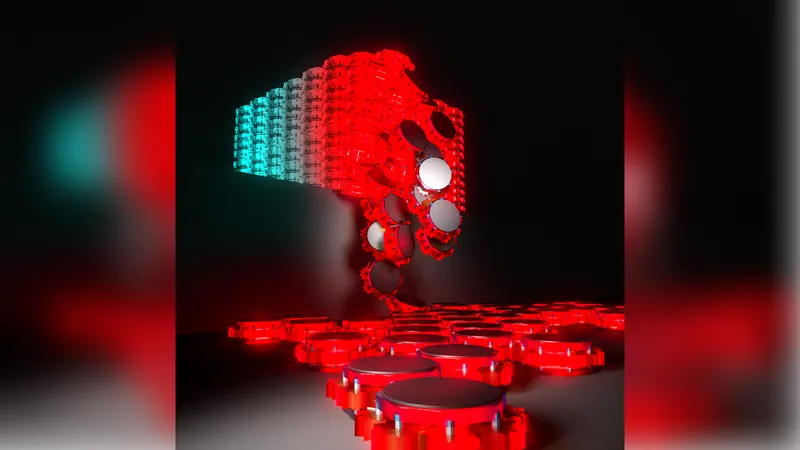
Tiny Robots That Flow Like Water Yet Support Human Weight!
2025-05-01
Author: Charlotte
Revolutionary Robots Mimic Embryonic Behavior
In a groundbreaking leap in robotics, researchers from UC Santa Barbara and TU Dresden have designed tiny robots that can flow like water and harden to support heavy loads, reminiscent of embryonic cell behavior. These cylindrical marvels, measuring just 2.75 inches (70 millimeters) in diameter, are manufactured using advanced 3D printing technology and polylactic acid.
A Unique Design with Unimaginable Potential
Each robot features a magnet at its base and yellow gears made from the same bioplastic. Together, they exhibit remarkable abilities, including forming structures and even self-healing, capable of supporting over 700 newtons—equivalent to 500 times their own weight! This remarkable study was highlighted in the journal *Science* on February 20.
Inspired by Nature: The Cohesiveness of Life
The secret behind these robots lies in the magnets that allow them to 'stick' together, maintaining their cohesiveness much like embryonic cells that interact to create complex forms. Matthew Devlin, a Ph.D. candidate at UCSB and lead author of the study, explained that these robots adapt their shape and structure through a pattern reminiscent of how cells organize into honeycomb-like patterns.
Pushing Boundaries with Smart Gear Mechanisms
Eight motorized gears enable these robots to exhibit intracellular forces that transform into tangential movements. This makes it possible for them to maneuver in tight spaces while pushing and pulling against one another. The team aims to create materials that can switch between rigid and flexible states depending on the requirements of their environment.
A Legacy of Embryonic Research
The concept was heavily influenced by the work of former UCSB professor Otger Campàs, who studied the self-sculpting abilities of embryos through phase transitions between solid and liquid states. This unique capability allows cells to 'sculpt' themselves, an idea that has been ingeniously translated into robotic technology.
Changing Strength: The Key to Versatility
Devlin expressed that the most intriguing aspect of their research is not merely the transition from liquid to solid states, but how these robots can alter their strength. By adjusting the force applied by the gears, the robots can act more like a solid or a liquid, even allowing researchers to stand on them without collapsing!









 Brasil (PT)
Brasil (PT)
 Canada (EN)
Canada (EN)
 Chile (ES)
Chile (ES)
 Česko (CS)
Česko (CS)
 대한민국 (KO)
대한민국 (KO)
 España (ES)
España (ES)
 France (FR)
France (FR)
 Hong Kong (EN)
Hong Kong (EN)
 Italia (IT)
Italia (IT)
 日本 (JA)
日本 (JA)
 Magyarország (HU)
Magyarország (HU)
 Norge (NO)
Norge (NO)
 Polska (PL)
Polska (PL)
 Schweiz (DE)
Schweiz (DE)
 Singapore (EN)
Singapore (EN)
 Sverige (SV)
Sverige (SV)
 Suomi (FI)
Suomi (FI)
 Türkiye (TR)
Türkiye (TR)
 الإمارات العربية المتحدة (AR)
الإمارات العربية المتحدة (AR)